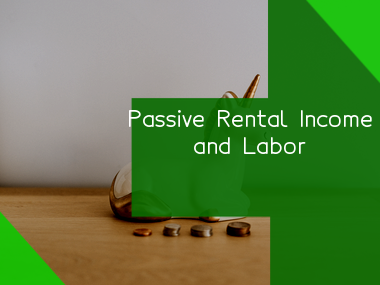I can provide a general explanation about the typical labor and responsibilities that landlords need to expect with a rental property.
The amount of labor that landlords should expect with a rental property depends on various factors, including the type of rental, the number of units, and the level of maintenance required. Some common tasks that landlords need to handle include:
- 1. Advertising and marketing the rental to attract tenants.
- 2. Screening tenants, such as performing background and credit checks.
- 3. Preparing lease agreements and collecting rent payments.
- 4. Maintaining and repairing the property, including routine maintenance and emergency repairs.
- 5. Addressing tenant complaints and addressing any issues that arise.
In addition, landlords are responsible for complying with local and state regulations regarding rental properties, such as obtaining the necessary permits and licenses, ensuring the property meets safety codes, and abiding by fair housing laws.
Overall, the amount of labor that landlords should expect varies depending on the property and the tenants. However, it is important for landlords to be prepared to handle various tasks and responsibilities to ensure the success of their rental property.
How Rental Properties Vary
Rental properties can vary in several ways, such as:
- 1Type of property: There are several types of rental properties, including apartments, single-family homes, multi-family homes, townhomes, and condos.
- 2Location: The location of a rental property is a crucial factor that impacts its value and rental fees. Properties could be in urban, suburban, or rural areas.
- 3Rental terms: Rental properties can be rented on different terms, including short-term, long-term, month-to-month, or yearly rentals.
- 4Furnishing: Rental properties can come furnished or unfurnished.
- 5Amenities: Rental properties can include various amenities like swimming pools, gyms, laundry rooms, and parking.
- 6Rental rates: Rental rates vary depending on the location, size, condition, and age of the property, as well as the demand for rental properties in the area.
- 7Owner type: Rental properties can be owned by individual landlords, property management companies, or real estate investment trusts.
Typical landlord labor
- 1Maintenance and repairs: Landlords are responsible for ensuring that the rental property stays in good condition. They may need to make small repairs or hire someone for larger ones.
- 2Tenant communication: Landlords need to communicate with tenants regarding lease renewal, rent payment, late fees, maintenance issues, and other concerns.
- 3Property inspections: Regular inspections are necessary to evaluate the rental property's condition and identify any necessary repairs.
- 4Rent collection: The landlord needs to ensure they are collecting rent payments on time and may need to take action if a tenant is late.
- 5Property marketing: Attracting tenants is a significant part of a landlord's job. They need to advertise the property and conduct showings to potential renters.
- 6Lease preparation: A landlord must prepare lease agreements and ensure that all necessary clauses are included to protect their interests.
- 7Record keeping: Maintaining accurate records of financial transactions, lease agreements, tenancy records, and any maintenance requests is crucial.
These are just a few examples of the various tasks that landlords may need to perform. The duties can vary based on the size of the rental property and the number of tenants, among other factors.
How much can landlords automate?
Landlords can automate many aspects of their rental properties, including:
- 1Rent collection: Landlords can automate rent collection through online payment systems such as PayPal, Venmo, or other online payment platforms.
- 2Maintenance requests: Landlords can use a maintenance request system that can automatically dispatch maintenance requests to their maintenance team or contractors.
- 3Security: Landlords can install security cameras, smart locks, and other home security systems that can be monitored and controlled remotely.
- 4Lease management: Landlords can use property management software to automate lease management tasks such as lease renewals, lease expiration alerts, and lease amendments.
- 5Tenant screening: Landlords can use online tenant screening services that can automate tenant screening processes, including credit checks, criminal background checks, and eviction history checks.
- 6Utility billing: Landlords can automate utility billing by using sub-metering systems that can measure and bill tenants for their individual energy usage.
Overall, landlords can automate many of the day-to-day tasks involved in managing a rental property, which can save them time, money, and resources.
Final thoughts
Landlords are typically responsible for basic repairs and maintaining the safety and habitability of the property, such as ensuring that electrical, plumbing, and heating systems are functional and keeping common areas clean and safe. Tenants are typically responsible for maintaining the cleanliness and upkeep of their own rental units. However, the extent of a landlord's responsibilities can vary depending on local laws and rental agreements. Ultimately, it's important for landlords to strike a balance between fulfilling their obligations and ensuring that they are not taking on an unreasonable amount of labor or financial burden.
Just one more thing: if you liked the article, please like us on social media and share this article with friends.



